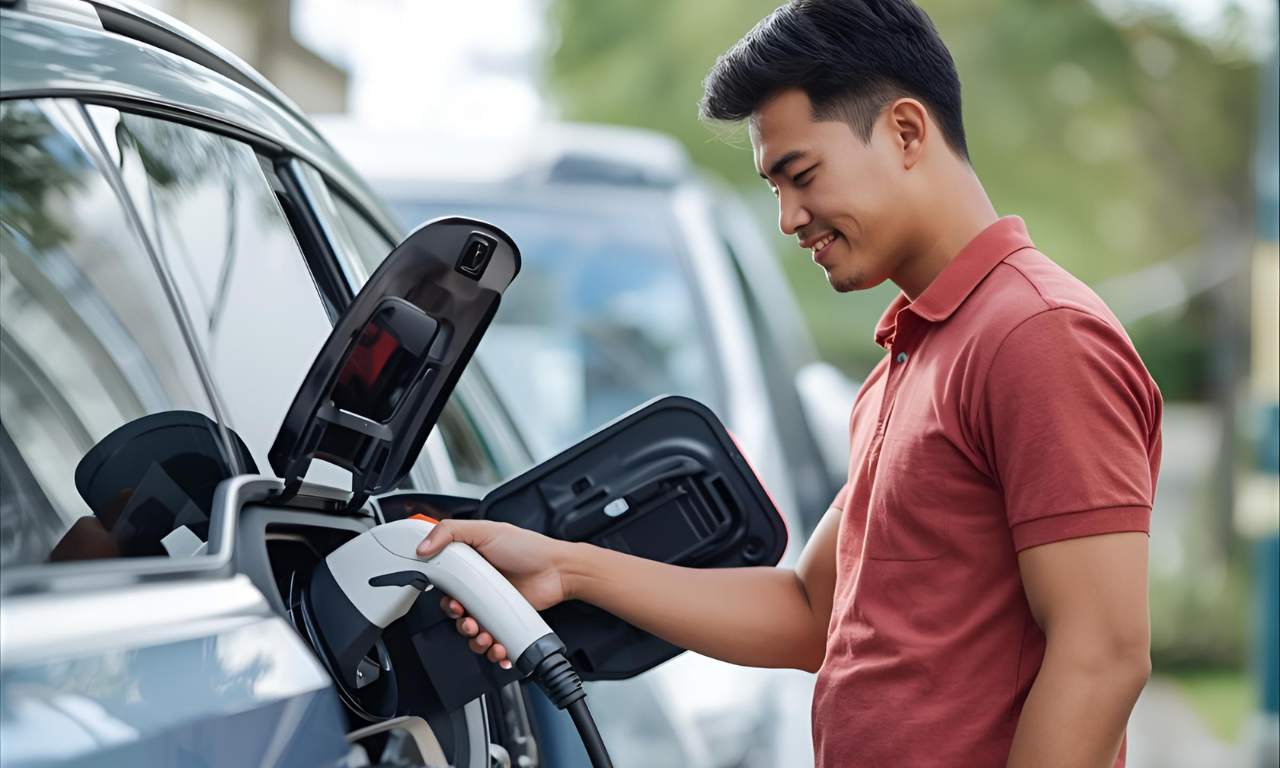Battery-Only Financing: The Next Frontier in EV Affordability

In October 2025, India’s electric vehicle market recorded a surge not only in sales but also in financing innovation. Among the many developments that shaped the month, battery-only financing emerged as one of the most transformative. When Piaggio Vehicles and RiseWise Capital announced a dedicated financing programme for battery replacements, it marked a pivotal shift in how affordability is redefined in the EV ecosystem.
Traditionally, EV financing has mirrored conventional vehicle loans-buyers financed the entire vehicle as one unit, including the battery. But as batteries account for nearly 30–40 % of the vehicle’s cost, their inclusion often inflated EMIs and loan tenures. The new wave of battery-specific loans is separating the asset from the power source, giving both consumers and lenders new flexibility.
The Economics Behind the Shift
The idea is simple: finance what depreciates at different rates separately. In an EV, the vehicle body and drivetrain retain longer-term value, while the battery faces quicker degradation. By offering battery-only loans, lenders enable customers to replace or upgrade batteries without re-financing the entire vehicle.
Piaggio–RiseWise’s October 2025 initiative allowed three-wheeler owners to finance replacement batteries with 100 % funding over 24 months at interest rates starting from 10.99 %, repayable through UPI AutoPay, ECS, or NACH. For commercial operators, this structure ensures cash-flow stability and reduces downtime. It also supports the secondary market for used EVs, where refurbished or certified batteries can be traded independently.
Greaves–Perpetuity Capital’s retail partnership added another dimension-high loan-to-value (LTV) coverage of up to 90 % of scooter cost with interest rates starting from 9.99 %. Together, these models reflect a growing realisation: the future of EV affordability lies in modular ownership.
Why Battery-Only Loans Matter
For CXOs in the EV and financial services sectors, the strategic implications are profound. This model does not just expand the financing portfolio-it redefines risk management, customer lifetime value, and product lifecycle planning.
1. Lower Credit Risk: Separating the vehicle and battery reduces total ticket size, making defaults less severe.
2. Improved Asset Valuation: Batteries can be valued independently, allowing lenders to create dedicated residual value models.
3. Extended Customer Relationships: Financing the same customer multiple times over the vehicle’s life cycle builds retention.
4. Better ROI for Lenders: With shorter loan terms and faster repayment cycles, liquidity turnover improves.
In essence, battery-only financing is not a product tweak-it’s a structural innovation that re-engineers EV affordability.
Technology: The Backbone of Battery Financing
Digital lending technologies are central to this transformation. API-based integrations, telematics-driven credit scoring, and electronic repayment channels now enable lenders to assess battery health, predict depreciation, and automate EMIs.
For example, RiseWise’s integration of UPI AutoPay and ECS-based repayment reduces friction while ensuring consistent recovery. Over time, data from battery performance analytics can feed directly into underwriting algorithms-creating a feedback loop that blends engineering data with financial intelligence.
As the ecosystem matures, AI-led underwriting and IoT-linked performance scoring will allow lenders to differentiate between high- and low-risk borrowers with unprecedented precision. The result is a financing ecosystem that rewards reliability, not just repayment history.
Impact on the EV Value Chain
Battery-only financing benefits multiple stakeholders across the value chain:
-
OEMs: Unlock recurring sales through battery replacements, creating new revenue streams.
-
Dealers: Strengthen after-sales engagement by linking customers with finance partners.
-
Consumers: Reduce upfront purchase cost by as much as 30–40 %, making EVs viable for first-time buyers.
-
Lenders: Expand portfolios with low-ticket, high-turnover loans.
This interdependence is fueling a deeper OEM–fintech convergence. As financing becomes embedded in every transaction-from online sales to service renewals-the boundaries between manufacturers, NBFCs, and digital lenders are dissolving.
Tier-2 and Tier-3 India: The True Test Market
Battery-only financing finds its strongest traction in Tier-2 and Tier-3 markets, where price sensitivity defines purchasing power. For small business owners and fleet operators, being able to replace only the battery rather than the full vehicle extends the lifespan of their investment.
Simple Energy’s embedded finance on e-commerce platforms like Amazon and Flipkart, alongside Piaggio’s battery loans, shows how digital access and product innovation intersect. In October 2025, many of these programmes coincided with the festive season, pushing record-high EV sales across semi-urban regions.
The implications are clear: financing is no longer a back-end utility-it is the new front line of adoption.
The Policy Angle: Reinforcing the Trend
Regulatory frameworks are also beginning to align. The Delhi EV Policy 2.0 introduced in October 2025 included provisions for low-interest financing, scrappage incentives, and tax concessions, while Uttar Pradesh’s localisation rule rewarded EVs assembled within the state through 100 % road-tax and registration-fee rebates.
These incentives make battery-only financing even more effective. When combined with state-level rebates, buyers can achieve effective cost reductions of up to ₹30,000–₹50,000 on select models. Such alignment between public policy and financial innovation signals the emergence of a mature ecosystem ready for scale.
Investor Confidence and Market Outlook
Investment patterns mirror this shift. In the same month, Mirova invested US $15 million in Revfin, an NBFC specialising in EV loans, while Honda Power Pack Energy India channelled capital into OMC Power to repurpose used EV batteries. These investments reinforce confidence in battery-centric business models that extend beyond vehicle sales into circular-economy ventures.
Going forward, expect lenders to design differentiated instruments-battery-leasing bonds, buyback-linked EMIs, and pay-per-use battery credits-catering to evolving ownership models.
Relevancy: Business Implications for CXOs
For decision-makers, three outcomes stand out:
1. New Revenue Architecture: Battery financing opens aftermarket monetisation channels and increases average revenue per customer.
2. Operational Scalability: Digital-first models reduce disbursal friction and enable scale without heavy branch networks.
3. Strategic Collaboration: OEM–fintech partnerships will define competitive moats, with data becoming the key differentiator.
The challenge ahead lies in integrating data from disparate systems-loan management, telematics, and customer CRM-into one unified architecture.
Conclusion: The Future of EV Affordability
As India races toward electrification, battery-only financing stands out as one of the most pragmatic and scalable innovations in 2025. It combines financial engineering with technology and policy alignment to solve the biggest barrier-upfront cost.
In the coming years, the most successful players will be those who treat financing as a strategic enabler, not a support function. Whether through NBFC partnerships, embedded platforms, or policy-linked subsidies, the evolution of EV finance will be defined by how intelligently stakeholders design affordability at scale.
At GrowthJockey, we believe India’s EV story will only reach full maturity when financial innovation catches up with technological progress. As venture architects, we help enterprises bridge that gap designing and scaling digital-first ecosystems that drive both adoption and profitability.
Our venture tools, including Intellsys.ai and Ottoscholar, enable organizations to turn insights into action transforming finance, data, and experience into one connected growth engine.
FAQs
Q1. What is battery-only financing in EVs?
Ans. Battery-only financing allows customers to finance or replace only the battery component of an electric vehicle, rather than the entire vehicle. It reduces upfront cost and enables flexible ownership.
Q2. How does battery-only financing improve EV affordability?
Ans. By separating the battery cost-which typically makes up 30–40 % of the vehicle price-buyers can lower EMIs and extend the usable life of their vehicles without full re-financing.
Q3. Which companies introduced battery-only financing in India?
Ans. In October 2025, Piaggio Vehicles partnered with RiseWise Capital to launch India’s first battery-only loan for three-wheeler owners, while Greaves Electric Mobility tied up with Perpetuity Capital for high-LTV retail loans.
Q4. What’s next for battery-only financing?
Ans. The next phase will focus on AI-based credit scoring, API-driven disbursals, and telematics-linked battery valuation, enabling lenders to manage risk and scale digital EV lending faster.








